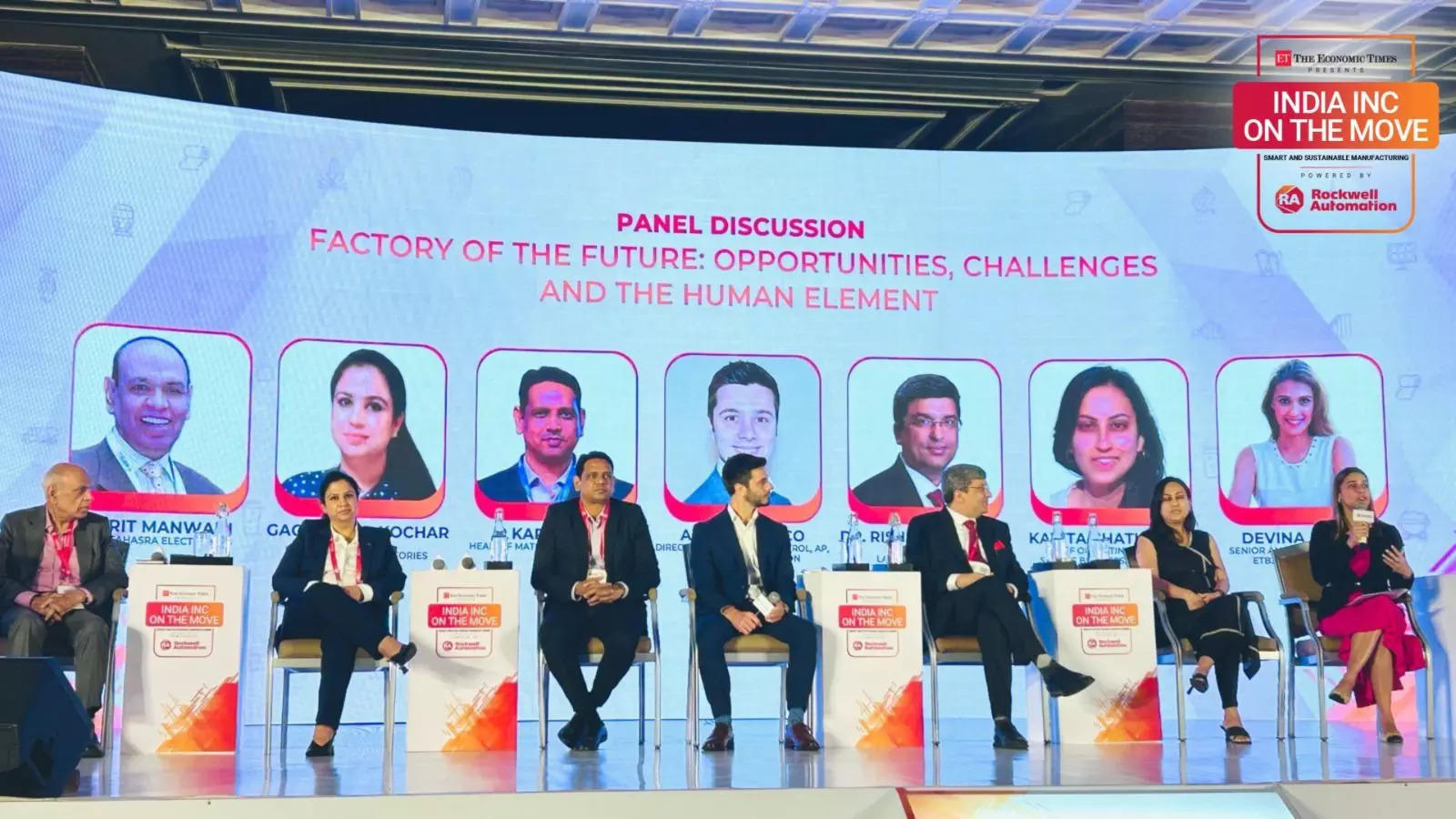
In the era of automation, humans remain an indispensable component of the manufacturing process.
While automation systems can significantly improve efficiency and precision, they will continue to rely on human expertise for design, monitoring, maintenance, and decision-making.
And while the concerns about job displacement, workers’ rights, and the impact of automation on society are all valid and must be addressed by those programming the future, it’s the synergy between automation technology and human capabilities that makes successful and sustainable manufacturing. This will help harness the full potential of automation while addressing the challenges it presents. This was the theme of a power-packed panel discussion at the India Inc on the Move (IIOTM) 2024.
“Talent building still remains a big challenge for manufacturing leaders. Training the Gen Z workforce can be very different from training the millennial workforce. Hence, use of simulation tools such as gamification helps to understand the pulse and drives employee engagement better”, Kavita Chaturvedi, COO, Snacks Business, ITC Limited, said.
In future factories, effective communication between humans and machines, as well as between machines themselves, will be crucial for learning, teaching and comprehension to evolve over time. A diverse range of communication channels, relying on advanced connectivity on the factory floor, will be necessary to capture voice, gestures, user input and machine and sensory data. Gagandeep Kochar, Unit Head, Dr Reddy’s Laboratories, observed, “We decide how tech works for us. Integrated solutions – MES on the shopfloor have helped us to go paperless.”
With the help of augmented and automation technologies, humans will be able to make timely decisions with more efficiency and accuracy. They will also be able to work more collaboratively and remotely with the help of high-performance connectivity, AI tools, and virtual reality (VR) devices to interact with machines and colleagues.
Kartikeyan.P, Head of Materials Management, Nokia, said, “It is about understanding the small use cases that go into creating the right mix of automation with the human element intact.”
In future, creating the talent pool for delivering world class “smart and sustainable” factories would be a big focus for most manufacturing companies and their leaders. Tapping into start up innovation, collaborating with universities to intervene and support curriculum development would be among the priorities.
Some of the benefits of automation for enhancing the human element:
- It gives the much needed competitive edge to talent
- Exponential accuracy in simulation tool
- Improves data integrity
- It creates the “Golden Tunnel” for critical process parameters
- It creates smart investigators for corrective and preventive action
- It helps productivity tools – there are digital use cases aimed at improving efficiency
- Digital twins of machines and processes are optimized to work for the benefit of the employees
While leaders do concede that the payback calculation may not work precisely, if there is the right buy-in from the finance and business decision makers, then the factory of the future is a vision well within reach – one where collaboration of the human and the robot is one among the many permutations and combinations that can be skillfully explored.
















